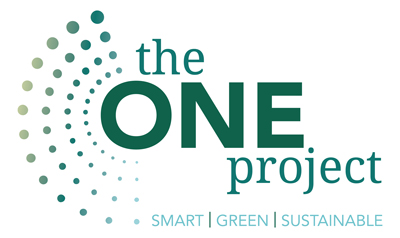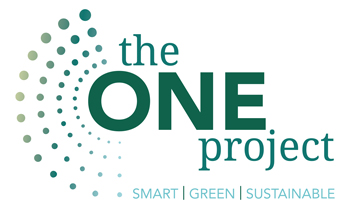In this section, we outline important criteria that can serve as prerequisites for an approach that favours virtual collaboration and teamwork in transnational projects. These criteria are based on our own experiences and reflections within the ONE consortium and on the results from the consultation of 38 European project managers across Europe. They mark additional factors to be mindful of when following the ONE approach.
PERSONAL AND SOCIAL ASPECTS
As European projects are about getting to know new partners, having a joint enterprise and engaging in mutual exchange, personal and social aspects are important features that need to be considered. Informal conversations are not only important for a ‘warming up’ or getting to know each other and building trust, but often help shape the partnership, lead to innovative ideas for proceeding or even develop new ideas for future collaboration. In a transnational project that is based almost exclusively on virtual collaboration, the mindful consideration of personal and social aspects is hence a conditio sine qua non. How and where can such spaces of informal exchange be provided in (mostly) virtual collaboration situations?
INTERCULTURAL EXPERIENCE AND UNDERSTANDING
A second criterion is about the core of transnational projects. Delving into different cultural contexts, being at different locations, getting an understanding of the specific context, of customs, rituals and conventions is of high relevance for the building of partnerships. It is a chance for getting in touch with interesting people during or after meetings, at the partner university or the business partner’s institution, without the encounters having been formally set up or arranged beforehand. Conversations help to get an understanding of different values, and also help to critically examine one’s own culturally shaped perspectives. How can this be facilitated in virtual collaboration and virtual meetings?
COMMUNICATION AND SOCIAL PRESENCE
A third criterion that stands out is communication and social presence within virtual collaboration. How a person appears as ‘real’ in computer-mediated communication and how interpersonal relationships in this setting can be built has been researched and discussed already for some decades (Kreijns, Xu, & Weidlich, 2021; Lowenthal, 2009). However, communicating and hence becoming more ‘real’ is not only about computer-mediated interaction, but also about project steering, as project management is mostly supported via online platforms and includes at least some regular communication via email or other electronic messenger tools with all partners. Hence, communication and social presence is of high relevance both for project management and for building relationships within the whole partnership.
ALLOCATION OF TIME AND EXCLUSIVENESS FOR VIRTUAL COLLABORATION
The fourth criterion focuses on the allocation of time and exclusiveness for virtual collaboration, particularly in online meetings. Due to no travel time, the time allocated to collaboration gets condensed and reduced to online events, with participants having other duties and meetings before and after and even in between. More than face-to-face meetings, online meetings tempt people to work simultaneously on other issues, which leads to them not being focused exclusively on the meeting. Virtual collaboration via online meetings needs time – time to focus, to pause, to reflect. And simultaneously, those responsible for hosting the virtual meeting need to allocate even more time for preparing it in an appropriate way, both didactically and technically.
VIRTUAL COLLABORATION ONLINE AND OFFLINE
Closely connected to matters of time is the fifth criterion, conducting virtual collaboration online and offline. Digital fatigue as a state where people are exhausted and disengaged through the permanent use of digital tools (Adlka, 2019), or through having endless and nonstop virtual meetings – also known as ‘Zoom fatigue’ (Brennan, 2020) – can jeopardise virtual collaboration. So, even if there are multiple ways of creatively using Zoom or other tools, new, innovative ways of combining and alternating online and offline collaboration need to be deployed.
Method and Sources
Method
The development of the ONE Guide followed a Design Thinking approach as an iterative process for agile navigation through the project (Brenner, Uebernickel & Abrell, 2016). It includes loops for designing, testing and evaluating with the ONE project members themselves being users and testers as well as including external experts to validate the work in progress.
A Design Thinking process follows five stages (Interaction Design Foundation, n.d.).
The first stage (1) Empathise puts the focus on the user, seeking to better understand the context and the user’s issues by observing and collecting data. In stage (2) Define, the collected data and observations are used to reframe the way to think about the users. With a better understanding of users and a clear definition of their challenges, stage (3) Ideate aims at generating as many possible solutions as possible. Stage (4) Prototype seeks to prototype and assess possible solutions in a quick iterative process and is followed by (5) Testing the selected prototype with real users. Their feedback could lead back to stage (4) Prototype or even to stage (1) Empathise to get an even deeper understanding of user and context.
For empathise, we started with determining project management principles for the ONE project. The ONE Manifesto for Agile Project Management (The ONE Project, 2021) describes the agile approach of the ONE project and is intended as an overarching framework for project management, product development and the vision for collaboration. In addition, it defines strategies and processes for the development of the project’s outcomes and the activities in ONE.
As another measure, we conducted a study of the needs of our target groups – European project managers, HEI leaders and other HE stakeholders – aiming to identify the main challenges they are facing, their success stories and effective tools they use to enhance digital collaboration in EU projects. 38 EU project experts from 17 European countries took part in the study, most of them working in the education sector in different positions ranging from CEOs to project managers, from project officers to professors. All of them have up to 30 years of experience working on EU projects with different areas of expertise including project preparation and proposal writing, managing and coordinating projects and evaluation and quality assurance. The data collection was based on a jointly developed questionnaire, which was answered via virtual meetings, phone calls or in writing.
The collected data served us to define the scope of the guide and was analysed using reflexive thematic analysis (Braun & Clarke, 2006; 2020). This helped us to outline different routes for successful project collaboration to equip and motivate project managers. A second consultation within the partnership (empathise) with regard to the different roles in EU projects and the needs for such a guide helped us in further shaping the structure (define, ideate). A first internal testing of one chapter as prototype showed us how to not proceed and made us reshape the structure of the guide from scratch, including all data already gathered and our own experiences and reflection in the ONE project. For refocusing and creatively restructuring the guide (prototype), we used Miro as a tool both within our small development team and for the synchronous and asynchronous feedback as internal testing in the partnership.
Having shaped the ONE Guide and having already included some of our ONE resources, we proceeded to an external testing with 48 project managers and staff all across Europe. All participants were asked to test the guide with particular attention to user-friendliness concerning design, structure, inclusiveness and overall usability, and to fill out a feedback questionnaire. The participants’ feedback and recommendations will then be combined in a user testing report, which informs the second development phase of the guide (prototype) and allows its finalisation. At the same time, our partners will be developing and providing further material for the guide that has already been shared and will be shared as we go on in the resources section in the online version of the ONE Guide.
Sources
Adlka, D. (2019, April 15). How Much Is ‘Digital Fatigue’ Costing You? WalkMeBlog. Retrieved November 13, 2021, from https://blog.walkme.com/digital-fatigue-business-process/
Brennan, J. (2020). Engaging learners through Zoom: Strategies for virtual teaching across disciplines. Hoboken, NJ: Jossey-Bass.
Brenner, W., Uebernickel, F., & Abrell, T. (2016). Design Thinking as Mindset, Process, and Toolbox. In W. Brenner & F. Uebernickel (Eds.), Design Thinking for Innovation (pp. 3–21). Cham: Springer International Publishing. https://doi.org/10.1007/978-3-319-26100-3_1
Braun, V., & Clarke, V. (2006). Using thematic analysis in psychology. Qualitative Research in Psychology, 3(2), 77–101. https://doi.org/10.1191/1478088706qp063oa
Braun, V., & Clarke, V. (2020). One size fits all? What counts as quality practice in (reflexive) thematic analysis? Qualitative Research in Psychology, 18(3), 328–352. https://doi.org/10.1080/14780887.2020.1769238
Cendon, Eva; Wietrich, Julie & Royo, Carme (2022). What is missing? What is gained? Experiences of virtual collaboration in EU projects. In Svenja Bedenlier & Victoria I. Marín (eds.), International Academic Mobility in a (Post) COVID 19 World. Conference Proceedings. https://doi.org/10.5281/zenodo.661082
ckr/dpa (2021). Videokonferenzen erzeugen hohe CO2-Emissionen, Forschung & Lehre, https://www.forschung-und-lehre.de/zeitfragen/videokonferenzen-erzeugen-hohe-co2-emissionen-3507/
The ONE Project (FeU: Eva Cendon, Dorothée Schulte & Magda Zarebski) (2021). ONE Manifesto for Agile Project Management. https://www.theprojectone.eu/manifesto/
Interaction Design Foundation. (n.d.). Design Thinking. Interaction Design School. https://www.interaction-design.org/literature/topics/design-thinking
Kreijns, K., Xu, K., & Weidlich, J. (2021). Social Presence: Conceptualization and Measurement. Educational Psychology Review, 34, 129-170. https://doi.org/10.1007/s10648-021-09623-8
Lowenthal, P. R. (2009). Social Presence. In P. L. Rogers, G. A. Berg, J. V. Boettcher, C. Howard, L. Justice, & K. D. Schenk (Eds.), Encyclopedia of Distance Learning (2nd ed., pp. 1900–1906). Hershey, PA: IGI Global. https://doi.org/10.4018/978-1-60566-198-8.ch280
Mace, R. (1985). Universal Design, Barrier Free Environments for Everyone. In Designers West Conference Proceedings (pp. 147–152). Los Angeles, CA.
Obringer, R., Rachunokc, B., Maia-Silva, D., Arbabzadehd, M., Nateghic, R., & Madanief, K. (2021). The overlooked environmental footprint of increasing Internet use. Resources, Conservation and Recycling, 167, 105389. https://doi.org/10.1016/j.resconrec.2020.105389

